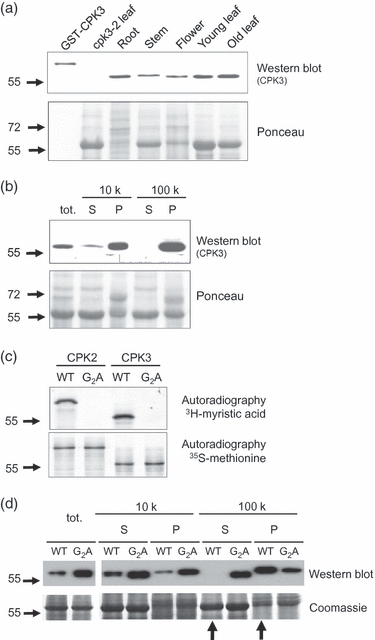Figure 2.

Localization and N-myristoylation of CPK3.(a) Tissue-specific expression of CPK3 in plants: root, stem, flower, young (20 days post germination) and old (40 days post germination) leaves.(b) Endogenous CPK3 in subcellular fractionation from wild-type plants. Lanes from left to right: total cell extract, protein from the 10 000 g (10 k) supernatant (S) and pellet (P), as well as the 100 000 g (100 k) supernatant (S) and pellet (P).(c) In vitro myristoylation of CPK3 and CPK2 as a positive control. Wild-type (WT) and non-myristoylable G2A mutants of CPK2 and CPK3 were in vitro translated in the presence of either 3H-labelled myristic acid or 35S-labelled methionine, and incorporation of the label was scored by autoradiography.(d) Fractionation of YFP-tagged CPK3 (WT) and G2A mutants (G2A) from infiltrated tobacco leaves using a GFP antibody. S, supernatant; P, pellet; 10 k, centrifugation for 10 min at 10 000 g; 100 k, centrifugation for 1 h at 100 000 g.
